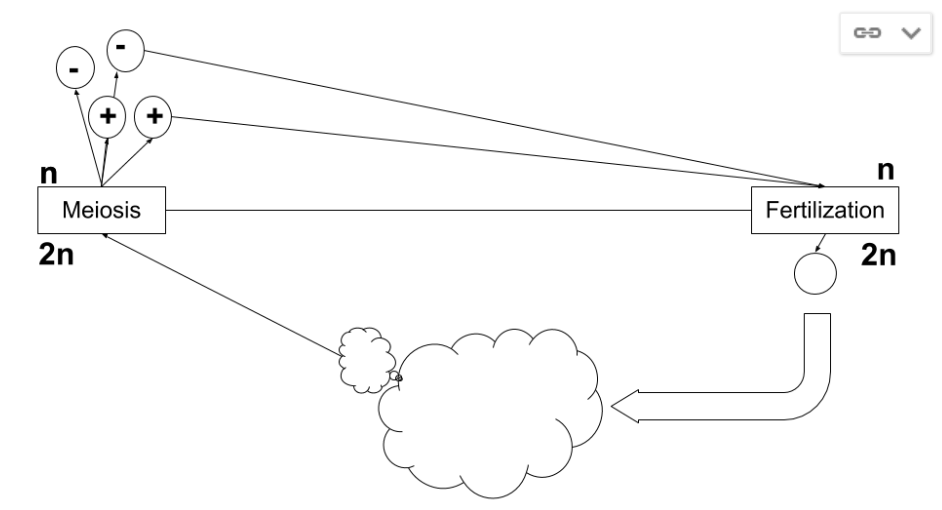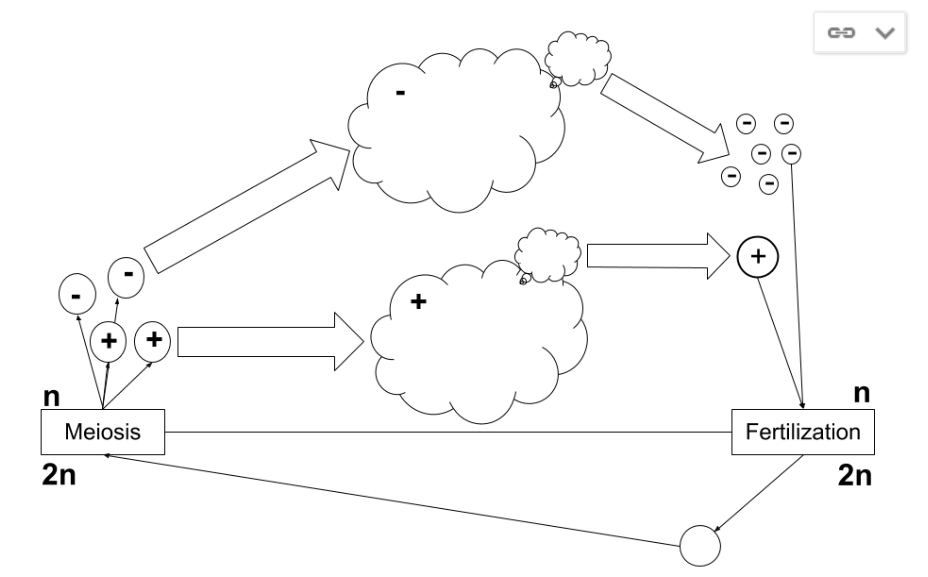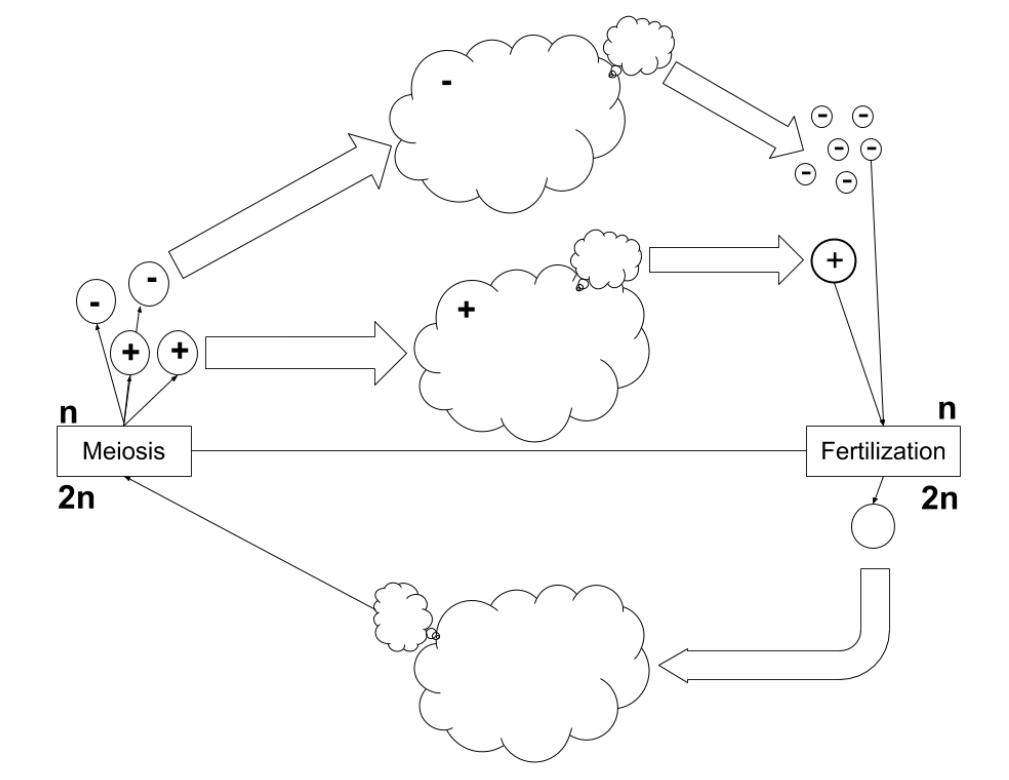14.5: Life Cycles
- Page ID
- 33507
A life cycle describes the events from the start of life to the reproduction of new life. For humans, we each begin as a zygote and grow by mitosis to become a multicellular. At some point, reproductive cells in our bodies undergo meiosis to make either eggs or sperm. If we fuse our eggs or sperm with another human, this forms a new zygote and the cycle continues. We can classify the type of life cycle that multicellular organisms have based on the ploidy of the multicellular stage, whether it is haploid or diploid.
Diplontic: The multicellular stage is diploid
Humans have a diplontic life cycle because the multicellular stage is diploid. The zygote grows by mitosis into a diploid, multicellular organism. Part of this multicellular organism undergoes meiosis to produce haploid cells called gametes within structures called gametangia (gametangium, singular). These gametes fuse to create a diploid zygote. Because gametes are produced by meiosis in this life cycle, each gamete is unique.
This is also sometimes called gametic meiosis because meiosis results in the production of gametes. In the life cycle diagram, the gametes are alone on the haploid portion.

Haplontic: The multicellular stage is haploid
For organisms with a haplontic life cycle, such as fungi and some of the green algae, the multicellular stage is haploid. In this case, as soon as the diploid zygote is formed, it undergoes meiosis to produce haploid spores inside structures called sporangia (sporangium, singular). Spores can be distinguished from gametes, not by how they are produced, but based on what they do afterward: spores grow, gametes fuse.

These spores then grow by mitosis to produce multicellular haploid organisms. These haploid organisms produce haploid gametes by mitosis. In this life cycle, all of the gametes produced by an organism are identical to each other and to the parent organism. These haploid gametes can then fuse to form a zygote.
This is also called zygotic meiosis because the zygote undergoes meiosis. In the life cycle diagram, the zygote is alone on the diploid portion.
Haplodiplontic: There are two multicellular stages, one haploid and one diploid
For a few marine algae and all plants, the haplodiplontic life cycle becomes more complex. To complete one life cycle, there are at least two multicellular individuals. The diploid zygote grows by mitosis to become a multicellular diploid organism, the sporophyte. A sporophyte produces haploid spores through meiosis in sporangia. These spores then grow by mitosis into multicellular haploid organisms, the gametophyte. A gametophyte produces haploid gametes by mitosis in gametangia. Gametes fuse to produce a diploid zygote.
This complex life cycle is also referred to as alternation of generations and, occasionally, sporic meiosis because meiosis produces spores. However, I avoid using this term because meiosis also produces spores in a haplontic life cycle.


